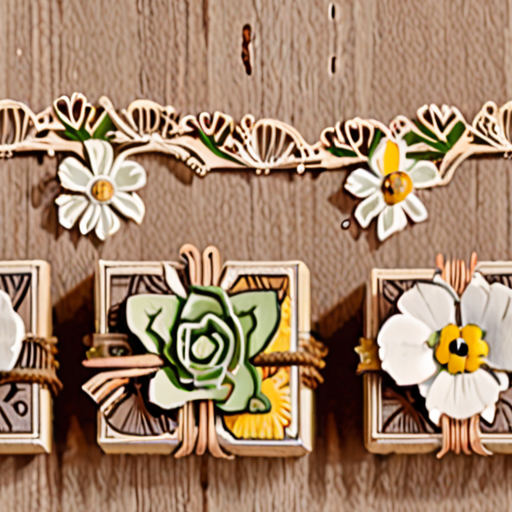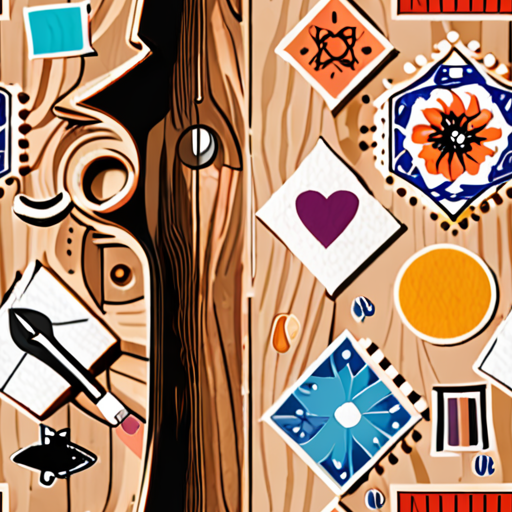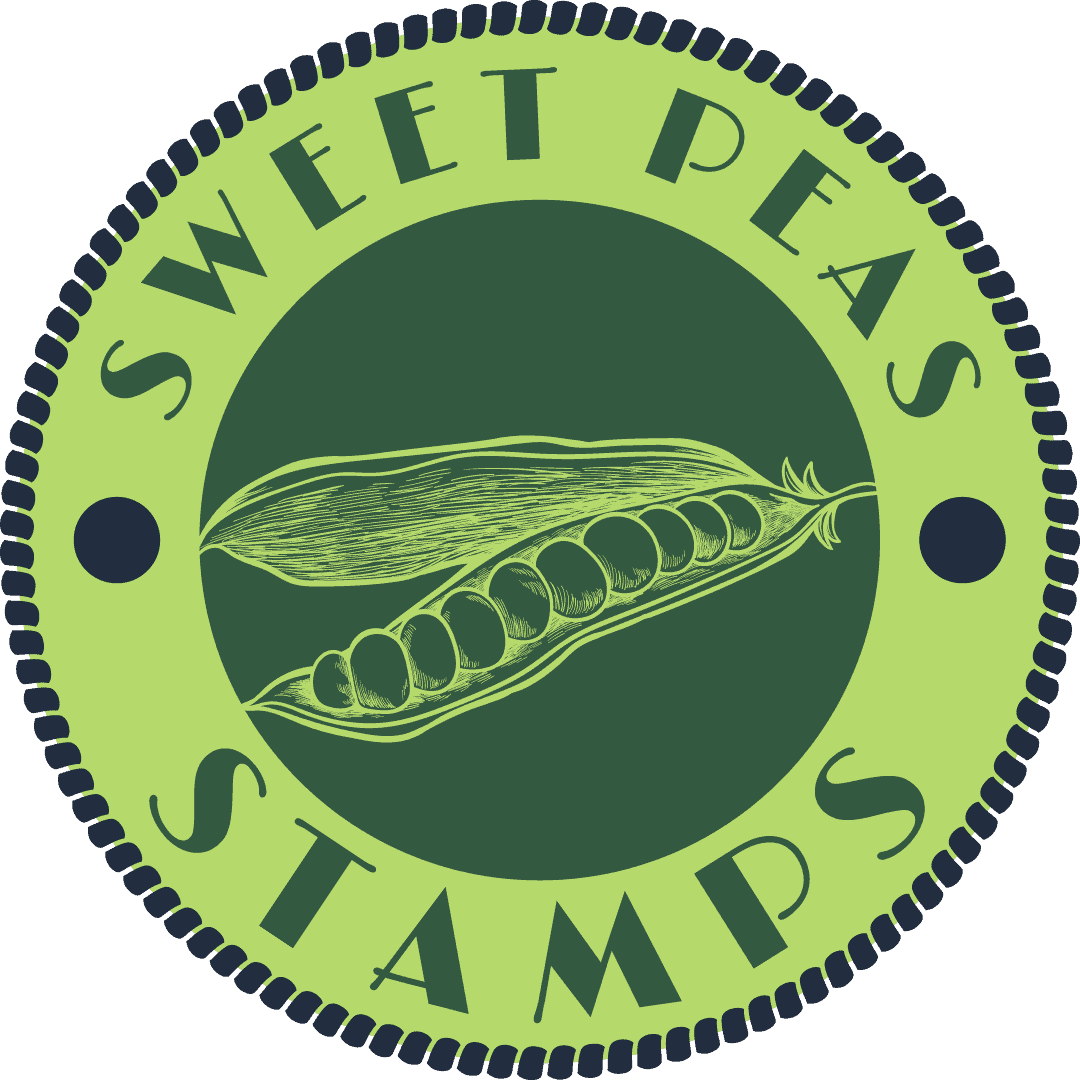Are you looking for a creative way to add a personal touch to your art projects, cards, and other crafts? Making your own stamps at home can be a fun and rewarding experience, allowing you to experiment with different materials and designs. With just a few simple tools and some basic crafting skills, you can create unique and professional-looking stamps that will elevate your creations to the next level.

Make Your Own Stamp at Home
To create a custom stamp at home, you’ll need a few basic materials and some simple tools.
- Rubber Eraser Stamp: Start by outlining your design onto the surface of a rubber eraser using a pencil, pen, or marker.
- Cut Away Excess Eraser: Use an XActo knife to carefully cut away the excess eraser around the design, creating a raised stamp.
- Add Support: If you want a bit more stability for your stamp, consider gluing the eraser to a small piece of wood.
Alternative Methods for Making a Stamp
You can also experiment with other materials to create unique and personalized stamps.
- Sponge Stamp: Cut a sponge into a shape or design, and then carve out the details using a sharp object.
- Foam Sheet Stamp: Use a foam sheet to create a stamp, cutting out intricate designs or patterns.
- Paper Mache Stamp: Create a paper mache mixture and apply it to a surface, allowing it to dry before carving out a design.
Tips and Variations
Experiment with different materials and techniques to create unique and personalized stamps.
- Colorful Inks: Try using colorful inks or paints to add a pop of color to your stamp designs.
- Texture Additions: Incorporate texture into your stamp designs by adding materials like glitter, sequins, or fabric scraps.
- Custom Shapes: Experiment with unusual shapes and sizes to create truly one-of-a-kind stamps.
Get Creative with Your Stamps!
With these simple methods and tips, you can create a variety of custom stamps to suit your needs and interests.
Whether you’re looking to add a personal touch to your crafts or simply have fun experimenting with different materials, making your own stamps at home is a great way to express your creativity and get crafty!
Can I Create My Own Stamps?
Yes, you can create your own paper postage stamps with personal images. In fact, the United States Postal Service (USPS) allows you to design and purchase custom postage stamps from approved third-party vendors. These vendors include PhotoStamps, PictureItPostage, and Zazzle, which offer a range of customization options and designs.
Designing Custom Stamps
To create your own custom stamps, you’ll need to choose a vendor and upload your image file. Most vendors accept popular file types, such as JPEG and PNG. Once you’ve uploaded your image, you can crop, resize, and adjust the color palette to suit your needs. Some vendors may also offer additional design tools, such as text overlays and graphics.
Popular Vendors for Custom Stamps
Some popular vendors for custom stamps include:
- PhotoStamps
- PictureItPostage
- Zazzle
These vendors offer a range of customization options and designs, making it easy to create unique and personalized stamps for special occasions or everyday use.
Benefits of Creating Custom Stamps
Creating your own custom stamps offers several benefits, including:
- Personalization: With custom stamps, you can add your name, initials, or logo to make your mail stand out.
- Convenience: No need to visit the post office or wait in line – simply order your custom stamps online and have them shipped to your doorstep.
- Creativity: With a range of design tools and options available, you can let your imagination run wild and create truly unique and eye-catching stamps.
At Sweet Pea Stamps, we’re passionate about helping you unleash your creativity and bring your vision to life. Whether you’re looking to create custom stamps for personal or professional use, our team is here to guide you every step of the way. Visit us today and discover the possibilities!
The Best Material for Homemade Stamps
I’m excited to share my favorite materials for making homemade stamps, perfect for kids and adults alike.
- Styrofoam Blocks: These are a staple in my crafting arsenal, and for good reason – they’re incredibly versatile and easy to work with. A small block of Styrofoam can be carved into a variety of shapes and designs, making it an excellent choice for homemade stamps.
- Sponges: Natural sponges or foam sponges can be cut into shapes and used as stamps. They’re great for creating textured, organic designs and can be easily cleaned and reused.
- Cut-Outs: Cardstock, felt, or even fabric scraps can be cut into shapes and used as stamps. These materials offer a lot of flexibility and can be easily customized to fit your needs.
- Carved Linoleum: For a more traditional stamp-making experience, try carving linoleum blocks into intricate designs. This method requires a bit more skill and patience, but the results are well worth it.
When choosing the best material for your homemade stamps, consider the type of design you want to create and the level of detail involved. With these options, you’ll be able to create a wide range of unique and interesting designs that are sure to impress.
At Sweet Pea Stamps , we love experimenting with different materials and techniques to bring our customers the most creative and fun stamp-making experiences possible.
For more inspiration and tips on making homemade stamps, be sure to check out our blog and explore our collection of stamps .

Printing Stamps at Home
As a crafter and DIY enthusiast, I’m always looking for ways to save money and be more creative with my projects.
- I’ve found that printing stamps at home can be a fun and cost-effective alternative to buying individual stamps.
- With a little bit of planning and the right materials, you can create custom stamps that fit your needs and style.
- In this article, we’ll explore the options for printing stamps at home and provide tips and tricks for getting started.
Options for Printing Stamps at Home
You have several options for printing stamps at home, depending on your level of expertise and the type of printer you have.
- DIY Stamp Carving: You can carve your own custom stamps using a variety of materials, including linoleum, rubber, and foam.
- Sticker Paper: You can print designs onto sticker paper using a laser or inkjet printer, then cut out the shapes to create custom stamps.
- Stamp Printers: There are specialized printers available that allow you to print custom stamps directly onto paper or cardstock.
Benefits of Printing Stamps at Home
Printing stamps at home offers several benefits, including:
- Savings:** Buying individual stamps can be expensive, especially if you need a large quantity.
- Customization:** By printing your own stamps, you can create custom designs that fit your needs and style.
- Convenience:** Printing stamps at home saves you time and effort compared to buying individual stamps.
Tips for Getting Started
If you’re new to printing stamps at home, here are a few tips to get you started:
- Choose the Right Materials:** Select high-quality materials that will produce crisp, clear images.
- Experiment with Different Designs:** Try out different designs and techniques to find what works best for you.
- Practice Makes Perfect:** Don’t be discouraged if your first attempts don’t turn out perfectly – practice makes perfect!
Conclusion
Printing stamps at home is a fun and cost-effective way to create custom stamps for your crafts and DIY projects.
By following these tips and experimenting with different materials and designs, you can create professional-looking stamps that fit your needs and style.
Sweet Pea Stampsoffers a wide range of crafting supplies and resources to help you get started with printing stamps at home.
Is it Legal to Print Your Own Stamps?
The United States Postal Service (USPS) allows individuals to purchase and print official postage from home using specialized software.
- The software, available from companies like Stamps.com, enables users to buy and print postage for any amount or mail class.
- This includes sending postcards, letters, and packages from the comfort of your own home or office.
Printing Your Own Stamps: What You Need to Know
To print your own stamps, you’ll need to:
- Purchase and download the necessary software from a reputable provider.
- Install the software on your computer and set up an account with the service.
- Select the type and quantity of postage you want to print, and pay for it using a credit card or other accepted payment method.
- Print the postage onto special paper or labels using your printer.
Benefits of Printing Your Own Stamps
Printing your own stamps offers several benefits, including:
- Convenience: You can send mail from anywhere, at any time, without having to visit a post office.
- Cost savings: Printing your own stamps can save you money compared to buying individual stamps at a post office.
- Flexibility: You can print postage for any amount or mail class, giving you greater control over your mailing needs.
Things to Consider Before Printing Your Own Stamps
Before printing your own stamps, keep the following things in mind:
- You’ll need to have access to a computer and printer to use the software.
- You’ll need to purchase and download the software, which may require a subscription or one-time fee.
- You’ll need to ensure that you’re using the correct type and quantity of postage for your mailings.
Alternatives to Printing Your Own Stamps
If you don’t want to print your own stamps, there are alternative options available:
- You can still purchase individual stamps at a post office or online from the USPS website.
- You can use a postage meter, which is a machine that prints postage directly onto envelopes and packages.
Getting Started with Printing Your Own Stamps
To get started with printing your own stamps, simply visit the website of a reputable provider, such as Stamps.com, and follow the instructions to sign up for an account and download the software.

Printing Stamps on a Regular Printer
You can print stamps on a regular printer, but there are certain requirements and considerations to keep in mind.
- The printer must be capable of printing high-quality images, preferably with a resolution of 300 dpi or higher.
- The paper used for printing must meet the specifications set by the United States Postal Service (USPS), which includes a minimum weight of 20 lb and a size of 3.5 x 4 inches.
- The ink or toner used must be compatible with the printer and the type of paper being used.
- The design of the stamp must be created using a software program that allows for high-resolution image editing, such as Adobe Photoshop or Illustrator.
- The printed stamp must be affixed to an envelope or package using a strong adhesive, such as glue or tape.
Benefits of Printing Stamps
Printing stamps on a regular printer offers several benefits, including:
- Convenience: You can print stamps from the comfort of your own home, eliminating the need to visit a post office or purchase stamps in person.
- Cost-effectiveness: Printing your own stamps can save you money compared to purchasing individual stamps or using a stamp vending machine.
- Customization: You can create custom designs and images for your stamps, allowing you to personalize your mail and packages.
- Environmentally friendly: Printing your own stamps reduces the need for packaging and shipping, making it a more eco-friendly option.
Things to Consider
While printing stamps on a regular printer can be convenient and cost-effective, there are several things to consider before getting started:
- Quality: The quality of the printed stamp may not be as high as a commercially produced stamp.
- Legibility: The printed stamp may not be legible under certain lighting conditions or when viewed at a distance.
- Adhesive: The adhesive used to attach the printed stamp to an envelope or package may not be strong enough to withstand handling or transit.
- Compliance: The printed stamp must comply with USPS regulations regarding size, weight, and design.
Conclusion
In conclusion, printing stamps on a regular printer is a viable option for those who want to save time and money, customize their mail and packages, and reduce their environmental impact. However, it’s essential to consider the quality, legibility, adhesive, and compliance of the printed stamp before using it for mailing purposes.

0 Comments